Best in-ear headphones 2025: top earbuds tried and tested by our experts
Excellent in-ear earphones for a range of budgets and requirements

There are many reasons a person may prefer in-ear headphones, also known as IEMs (in-ear monitors). Over-ears tend to offer a bigger, beefier sound, but in-ears grant you a more discrete look, less weight in your ears and greater portability as you travel. Plus, if you're a workout warrior or a sporting semi-pro, in-ears are the logical choice for fuelling your athletic goals.
Once you know you favour in-ear headphones, you'll have to navigate a complex market to see which are best for you. Runners may go for a true wireless pair with winged tips to give a more secure fit, whereas audiophiles will care more about getting a premium set of earbuds that prioritise sound over other considerations.
Pooling our extensive collective experience of testing headphones, we’ve created this guide to help you avoid the duds and discover the dreamboats, detailing the top-performing in-ear headphones in town.
Our team has tested every set to ensure they’re worth your time, so you can read more about our testing process or scroll down to find your perfect pair. We've listed all types here, so if you want to go completely wireless, check out our pick of the best cheap wireless earbuds and best wireless earbuds overall.
Recent updates
March 13th: We've added the SoundMagic E80D to our also consider section following a five-star review.
The quick list
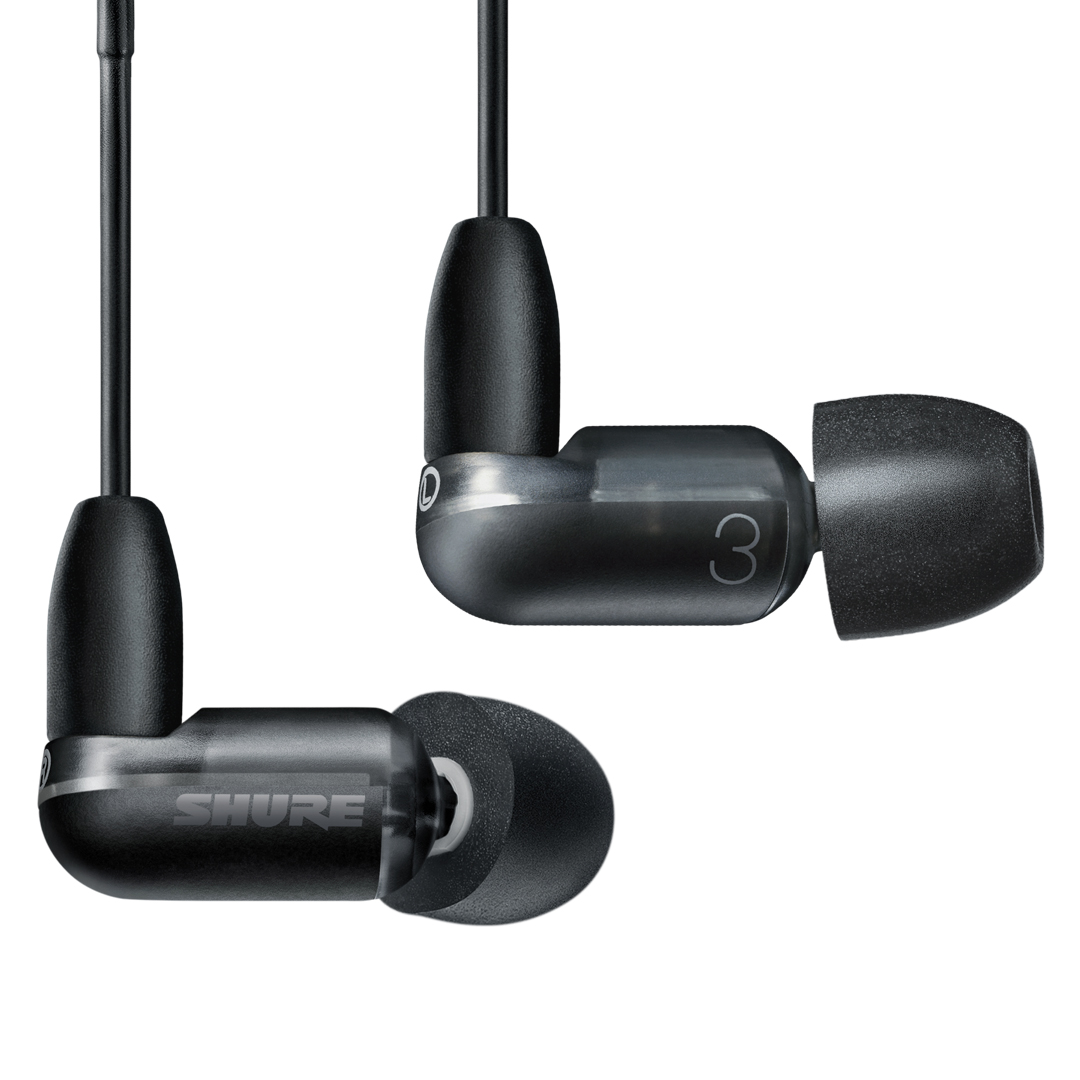
Breathtakingly musical and comfy to wear, Shure’s Aonic 3 set a new benchmark for wired in-ear headphones.

Exceptional wireless earbuds that deliver a resplendent soundscape and plenty of musical excitement.
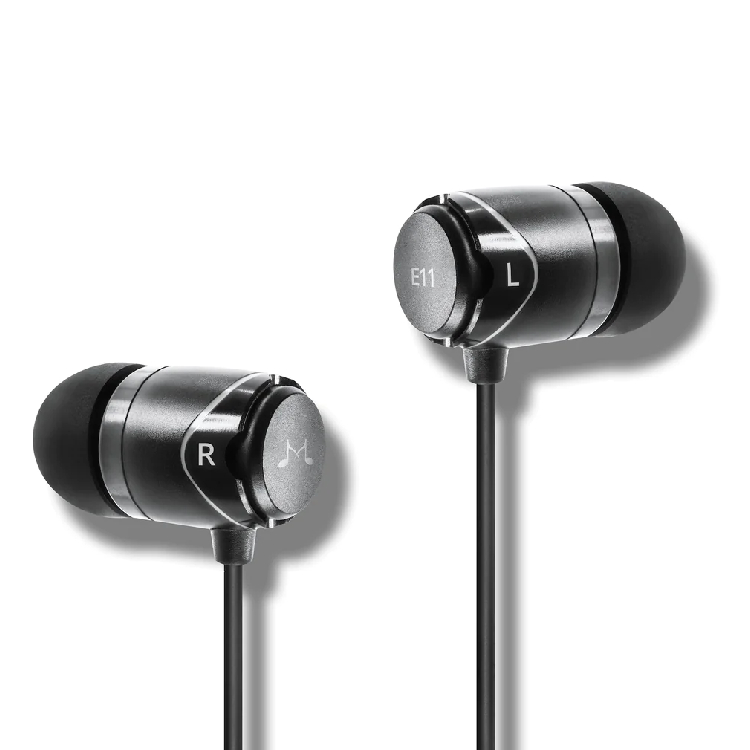
With an entertaining, upfront sound, plus a remote control and mic, these wired buds are an absolute bargain.

For bargain hunters who seek serious bang-for-buck value, the WF-C510 deliver a sonic masterclass.

Shure’s mid-price in-ear headphones are masters of musicality – just make sure you pair them with a suitable source.

Comfortable, refined and with effective noise cancelling, the WF-C700N offer great value for money.
Load the next 3 products ↓

They don’t come cheap, but if you’re looking for brilliant sound and some of the best noise cancelling around, the Bose buds really excel.

Even at their premium price tag, the Bowers & Wilkins Pi8 are extraordinarily impressive wireless earbuds, blowing us away with the level of detail and refinement they deliver.

They’re a pricey proposition, but if you have a good enough source the IE 900 more than justify the outlay.

I am the Deputy Editor of What Hi-Fi? and a consumer electronics journalist with nearly 20 years of experience writing news, reviews and features. I've tested well over 100 pairs of headphones as part of the audio reviews team, including wired and wireless models across a range of budgets. The comfort and secure fit of in-ear models are paramount when it comes to long-lasting use, while I also ensure I test out the effectiveness of features such as noise-cancelling, call quality and spatial audio in wireless pairs. Most of all, the sound quality must befit the price tag – I'm confident the best in-ear headphone picks below will have you tapping along to your favourite tunes at whichever budget and type you're looking for.
Best wired in-ear headphones overall
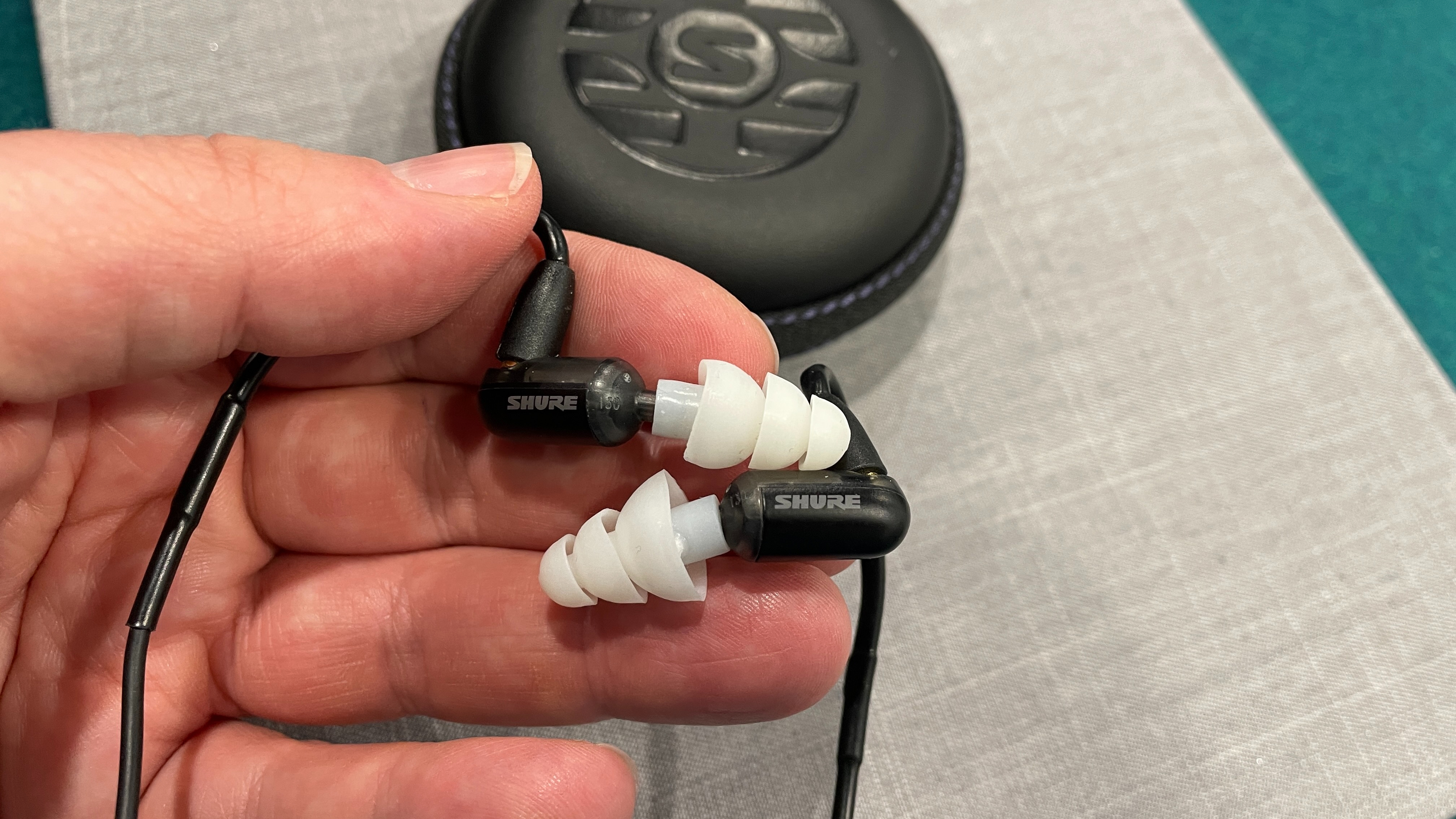




1. Shure Aonic 3
Our expert review:
Specifications
Reasons to buy
Reasons to avoid
Anyone who prioritises sound quality above all else but still favours the small form factor of in-ears should seriously consider what the Shure Aonic 3 are offering. They're simple but expertly made IEMs that, as far as we can tell, have few serious rivals at this level thanks to their devotion to superb musical reproduction. Little wonder they've been winning What Hi-Fi? Awards since 2020.
Design-wise, the Aonic 3 look like your classic IEMs, with a wired connection feeding a pair of nozzles alongside some handy in-line controls. Getting a good fit is made simple by a choice of nine different eartips to get superior isolation and comfort, while a built-in mic lets you answer calls without digging out your phone all the time.
The true reason to recommend the Aonic 3, of course, is for their peerless audio at this price. The current Award-winners are pros at handling dynamics as well as detail, with a sense of rhythm and timing that gives energy and life to the music they convey. If you want a pair of wired in-ear headphones that offer a step up in sound quality from the more budget SoundMagics below, then these Shures are very hard not to recommend.
Read our full Shure Aonic 3 review
Best wireless in-ear headphones overall

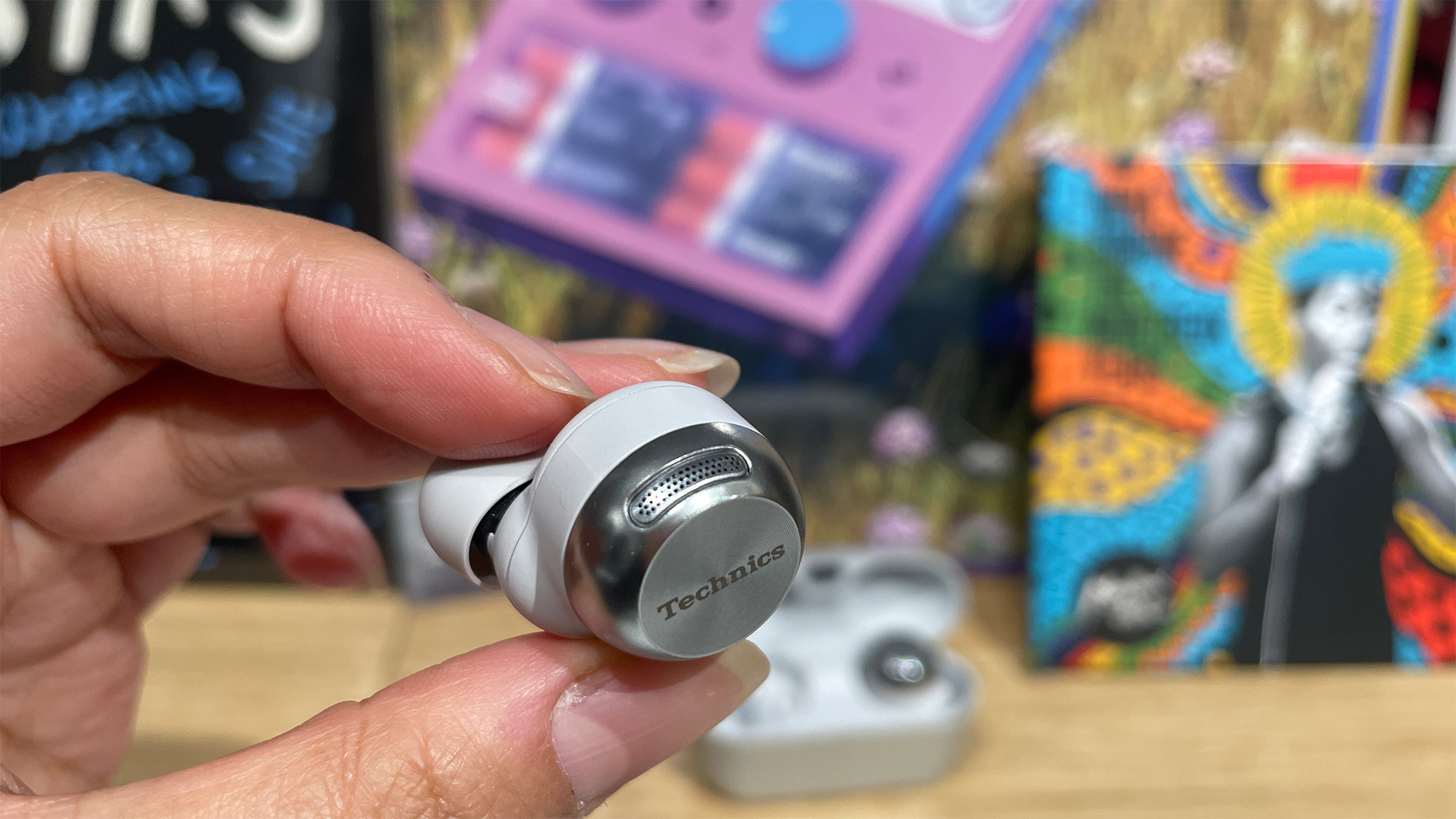



Specifications
Reasons to buy
Reasons to avoid
We were beginning to think there would never be a pair of wireless earbuds at this level that could knock the supremely talented Sony WF-1000XM5 off their perch. Technics might be better known to you for its direct-drive turntables and hi-fi products, but its flagship EAH-AZ100 buds have left quite an impression on our reviewers. They're so good, in fact, that they have many of us switching from the comfort of the XM5 to Team Technics, and that's no mean feat.
The Technics are small, light and comfortable to wear for long periods. The touch controls on each bud are fully customisable, so you can set the Technics up to control audio modes, playback and volume in any way you want. We also found the Bluetooth connection solid and stable, with adequate support coming via SBC, AAC, LDAC and the LC3 codec. Battery life grants you around ten hours from a single charge and a further 18 from the case, competitive numbers at this level.
The EAH-AZ100 offer excellent noise cancelling. As we stated in our review, the Technics "damp down the noise around you like heavy snowfall muffling the world” and can be adjusted manually or the buds will do it automatically, taking into account the amount of ambient noise present. It’s not quite as good as the Bose QuietComfort Ultra’s ANC, but it’s still top-notch noise cancelling that won't leave you feeling short-changed.
Sonically, we love how the AZ100 sound. Their even-handed tonal balance and “wonderfully clear and open sound" are a delight, with an even more spacious and open presentation than the Award-winning Sony WF-1000XM5. Across the frequency range, the buds sound precise and impactful but never overbearing, with a punchy sense of dynamism elevating them over older Technics models.
Rivals beware: Technics has found its winning wireless earbuds formula.
Read our full Technics EAH-AZ100 review
Best cheap wired in-ear headphones


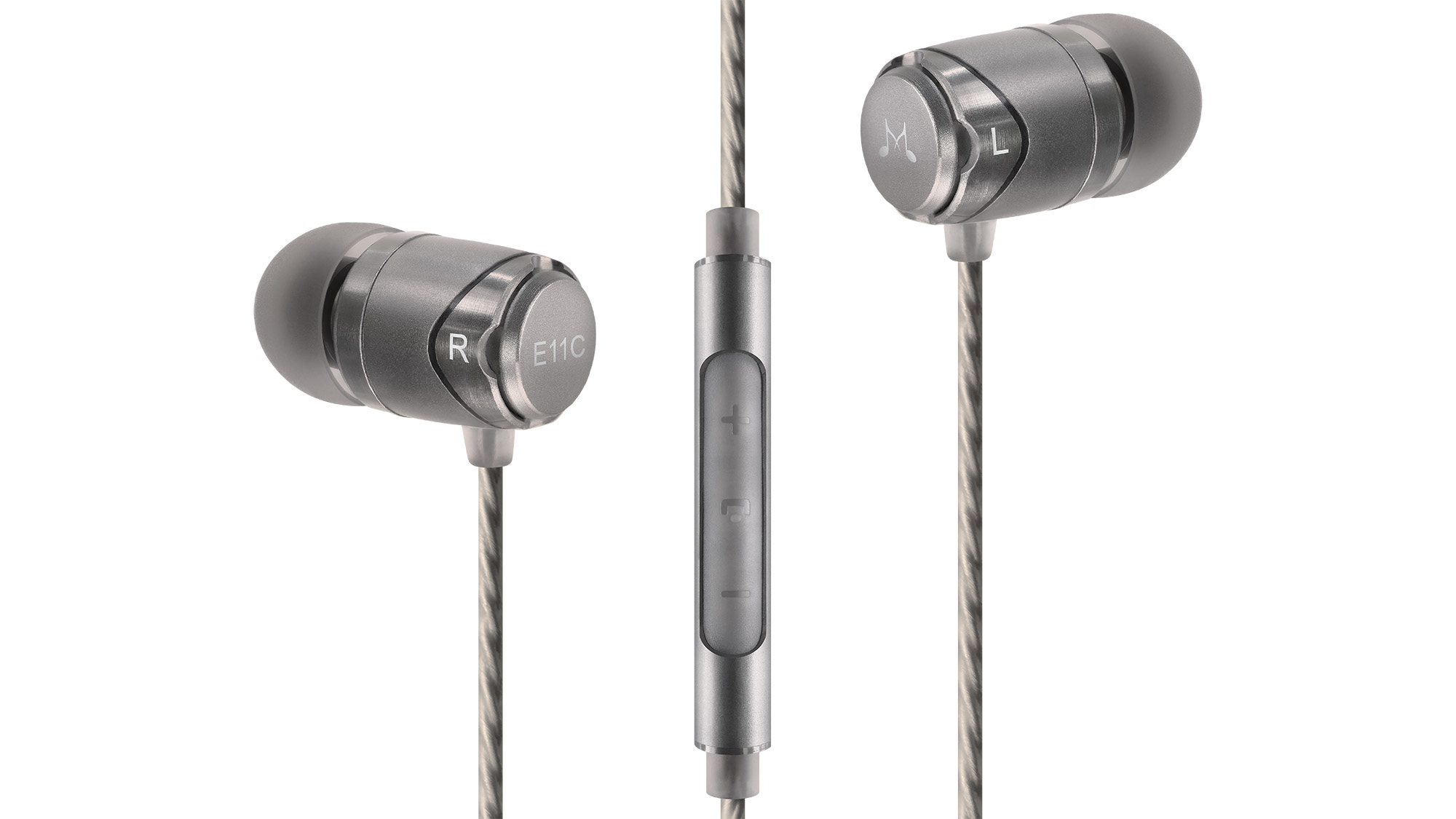
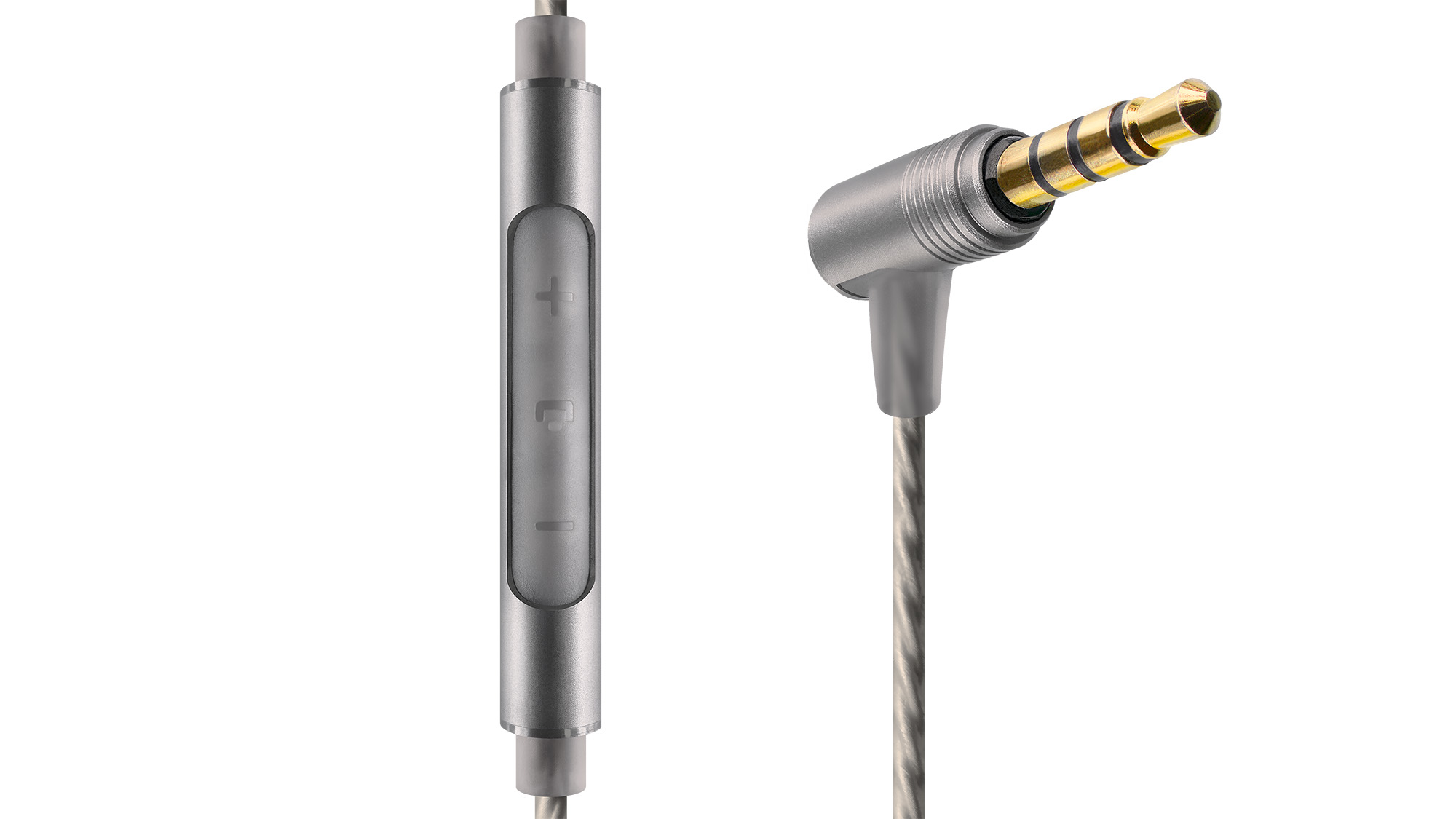
3. SoundMagic E11C
Our expert review:
Specifications
Reasons to buy
Reasons to avoid
Despite only having been founded in 2005, SoundMagic rose from obscurity to become multiple-Award winners. Most notable for its budget in-ear headphone range, the SoundMagic E11C provides a perfect showcase for why the brand has already enjoyed so much success.
Cheap they may be, shoddy they certainly ain't. The E11C offer a snug fit and an almost unbelievably well-balanced, energetic tone from their 10mm dynamic drivers, with decent depth to a lower end which is always complemented by a clear and crisp midrange. It's also worth noting that their high sensitivity (112dB) means that the E11Cs can deliver plenty of volume which makes them a great fit for smartphones and portable audio players, provided you have a 3.5mm socket, that is.
Functionality is kept simple with a remote and mic on the cable for the left earphone, but we're not expecting complex arrangements at this level. It’s a standard three-button job, so it should work with Apple and Android smartphones, giving you volume and stop/start functionality. SoundMagic has revealed a USB-C-ended twist on the E11C, but as we're yet to give those a proper listen, the 3.5mm in-ears are the ones we're recommending.
Anyone not willing to stretch to the Shure Aonic 3 above can consider the E11C as an excellent, more affordable alternative. If you want a direct USB-C connection and love that SoundMagic sound, the new E80D have made their way into our also consider section below thanks to their clear, clean sound on a budget.
Read our full SoundMagic E11C review
Best cheap wireless in-ear headphones




4. Sony WF-C510
Our expert review:
Specifications
Reasons to buy
Reasons to avoid
From bottom to top, Sony's wireless earbuds are delivering the goods. The premium WF-1000XM5 are still our pick as the best premium wireless earbuds around, but Sony doesn't just have its gaze set on the costlier side of the landscape. Following up on the Award-winning WF-C500 budget buds, the outstanding WF-C510 are a five-star sequel that once again tick all of the right boxes.
Sonically, we feel that the C510 are a marked improvement over their predecessors, delighting us with a sound that comes across as richer and more full-bodied than the leaner, smaller-scale C500. The punch and solidity on display from the C510 are remarkable considering the cost, serving up a weighty, driven sound that really zips along nicely. As our review enthused: "their sense of timing and ability to just get into the groove of a song works with any music you play through them", making for a deeply engaging experience.
Improvements have been made elsewhere, though Sony has made some canny compromises to keep costs down. The C510 are smaller and cheaper-feeling than their outgoing processors, but you do get new features, including Multipoint Bluetooth, Ambient Sound Control (which filters ambient sound out while enhancing human voices), on-bud touch controls and a total of 22 hours of battery life to more than soften that blow. At this level, they offer far more than we could have hoped for.
The Sony WF-C500 are still around and we imagine they will remain available for quite some time due to their popularity, with prices already falling to reflect the C510's arrival. While it's a tough choice between the two, the C510's more engaging sonic personality and impressive feature set make them our recommendation as the best cheap wireless earbuds on the market today. Another Sony winner.
Read our full Sony WF-C510 review

To wire or not to wire – it's the eternal question. Wireless headphones of all forms have exploded in popularity over the past ten years, but that owes as much to their convenience and extensive feature sets as it does to improvements in audio performance. To be blunt, wired models still beat comparative wireless rivals hands down for sound – wires are simply far a more effective means of transmitting data than lossy Bluetooth, and even a relatively cheap pair of wired in-ears (the SoundMagic E11C, say) can keep up with much more expensive Bluetooth rivals, even if they generally don't come packed with as many features.
Best mid-price wired in-ear headphones





5. Shure Aonic 5
Our expert review:
Specifications
Reasons to buy
Reasons to avoid
Shure's Aonic 5 certainly know how to catch the eye thanks to the transparent section on each earpiece that allows you to see their inner workings, but it's how they sound that earns them their place on this list. Some of Shure's most premium wireless monitors, these are the in-ears to go for if you truly care about sound quality and you're willing to pay handsomely to get it.
The Aonic 5 employ three high-definition balanced drivers in a dual woofer and single tweeter configuration - provided you've got the right source and material, the result is quite sensational. There's an embarrassment of detail and a wonderful sense of clarity within their presentation, with vocals sounding particularly rich and natural. Bear in mind that they're incredibly sonically transparent, so any ropey recordings will be exposed as the Aonic 5 take no prisoners with their clear, "tell-it-as-it-is" style.
As usual, Shure provides plenty of tips to help you find the right fit for the bud, but you also get two extra nozzles that you can use to change the balance of the sound. The ones labelled 'Bright' put too much emphasis on the top-end for our liking, but the 'Warm' pair offer a subtle increase in weight and substance. We'd still recommend sticking with the default ones, though, as this is where you'll get the most balance.
If you've got a decent DAC/headphone amp to drive them, the Shure Aonic 5 will show you exactly what they're capable of. If you don't, the Aonic 3 might be worth a look.
Read our full Shure Aonic 5 review
Best mid-price wireless in-ear headphones





6. Sony WF-C700N
Our expert review:
Specifications
Reasons to buy
Reasons to avoid
Ah, the Sony C700N, truly worthy to be our back-to-back Award-winners. The point of the C700N is to be a budget pair of noise-cancelling earbuds, so anyone who still wants ANC but isn't willing to splash the cash on the rather more premium WF-1000XM5 can still enjoy those isolating benefits without paying a fortune. It's a clever corner of the market, and one Sony is filling with great skill.
The C700N buds are relatively small, and while they may be more affordable than the XM5s, their lightweight design helps make them more comfortable than a whole host of more expensive rivals. Battery life is competitive at seven and a half hours, although the fact the charging case can only offer one extra charge does seem just a tad stingy.
They lack aptX HD and LDAC, which is a shame, but do feature that noise-cancelling that the WF-C500 lack. Adaptive Sound Control automatically switches listening modes depending on your location, and Sony's DSEE (Digital Sound Enhancement Engine) effortlessly upscales low-res digital audio files to higher quality.
Noise cancelling is nothing if the sound quality isn't there, but Sony has once again shown why they're the best in the game in this field with audio that feels supremely balanced and refined, offering up deep, detailed bass, expressive mids and engaging highs to concoct a very musical listen for the money spent.
Multipoint Bluetooth, which lets you switch between devices, arrived as part of a recent software update, and while the lack of support for aptX HD and LDAC is disappointing, it's not the end of the world. Either way, the superb level of comfort, sound quality, and great feature set make these in-ear headphones easy to recommend as a supremely well-priced pair of Award-winning wireless buds.
Read our full Sony WF-C700N review
Best noise-cancelling in-ear headphones



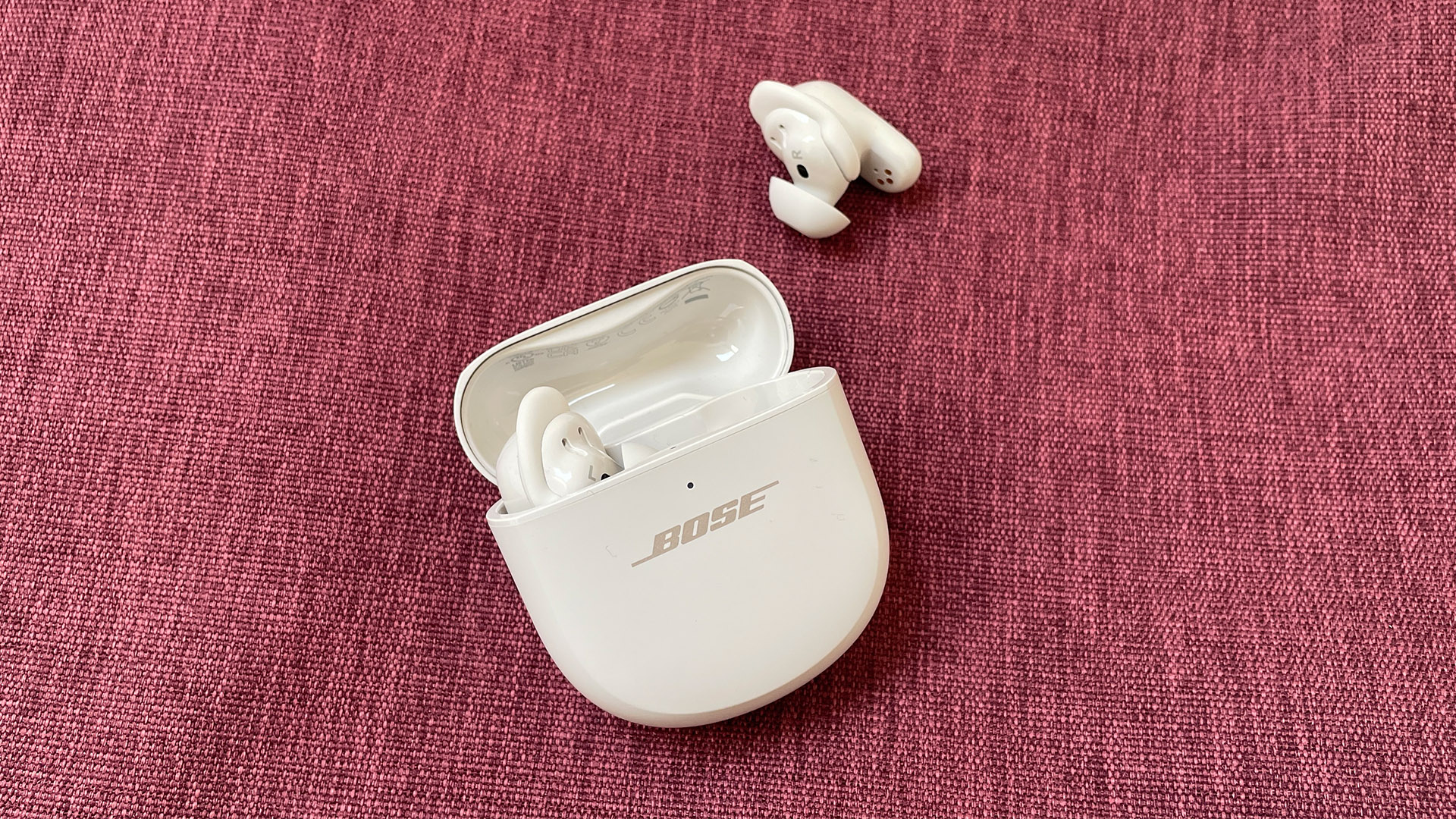

7. Bose QuietComfort Ultra Earbuds
Our expert review:
Specifications
Reasons to buy
Reasons to avoid
There are two clear frontrunners in the premium wireless earbuds space right now: the Sony WF-1000XM5 and the Bose QuietComfort Ultra Earbuds. You'll likely have been sold by the XM5's credentials above, so what do the Ultra Earbuds offer that the Sonys don't?
For a start, they look a lot nicer. The XM5s are a little plain and stale in appearance, but these sleek, luxurious Bose buds are handsome fellas, with a secure fit and a bit more aesthetic flair than their rivals - that's a plus point in terms of perceived value.
They also excel in two key areas: ANC and sound quality. The former is back and as good as ever, taking even the noisiest environments and reducing their impact quite dramatically. Every time you pluck the buds from their case and place them in your ears, Bose’s CustomTune calibration tech lets out a tone as it surveys the noise in your environment and adjusts the sound accordingly. Bose knows noise cancelling better than almost anyone, and it shows again here.
The Ultra Earbuds have undoubtedly improved over the QC II regarding sound quality, too. This isn't a case of being better or worse than the XM5s, rather it's about preferring a certain style of sonic presentation. There's a familiar richness and fullness to the sound, but the Ultra buds have a bit more of a skip in their step than the outgoing QuietComfort Earbuds II, as well as more detail around the edges of tones and instruments. For getting out the timbres of instruments, the Ultra Earbuds take things to the next level, offering a style that rewards you with genuine verve, dynamism and impact. The Sony XM5 are more refined and measured, but for musical insight and joie de vivre, the Ultra truly live up to their name.
Feature-wise, the big news for the QuietComfort Ultra Earbuds is they feature Bose Immersive Audioao (their version of spatial audio) and while the results are a little mixed, the ambition is definitely there. Elsewhere, though, call quality has improved while battery life remains the same, but we'll admit that the lack of Bluetooth Multipoint is a bit of a puzzler at this level.
All in all, a five-star alternative to the Sony WF-1000XM5 and a very, very decent pair of wireless earbuds full stop.
Read our full Bose QuietComfort Ultra Earbuds review
Best high-end wireless in-ear headphones
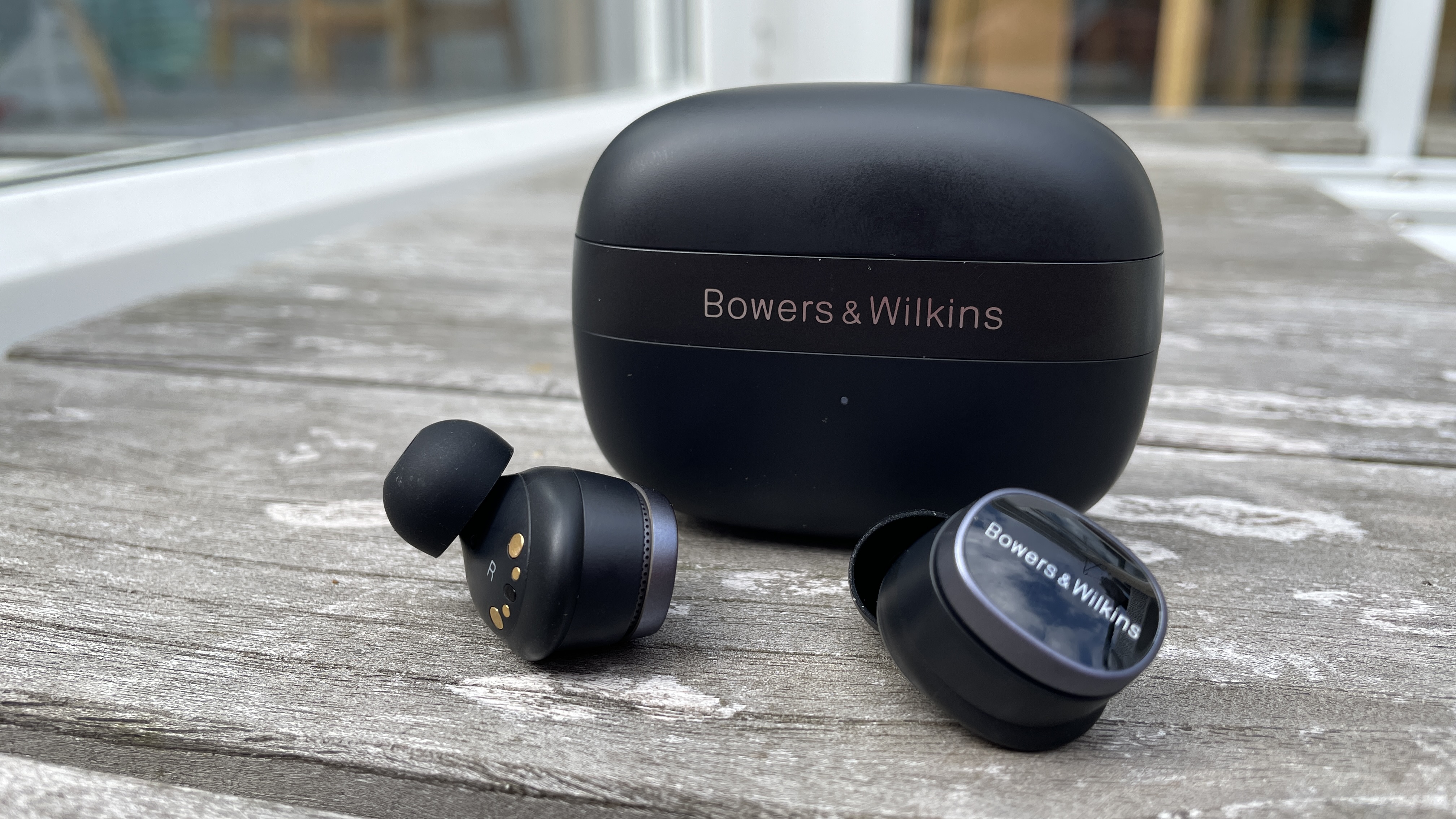


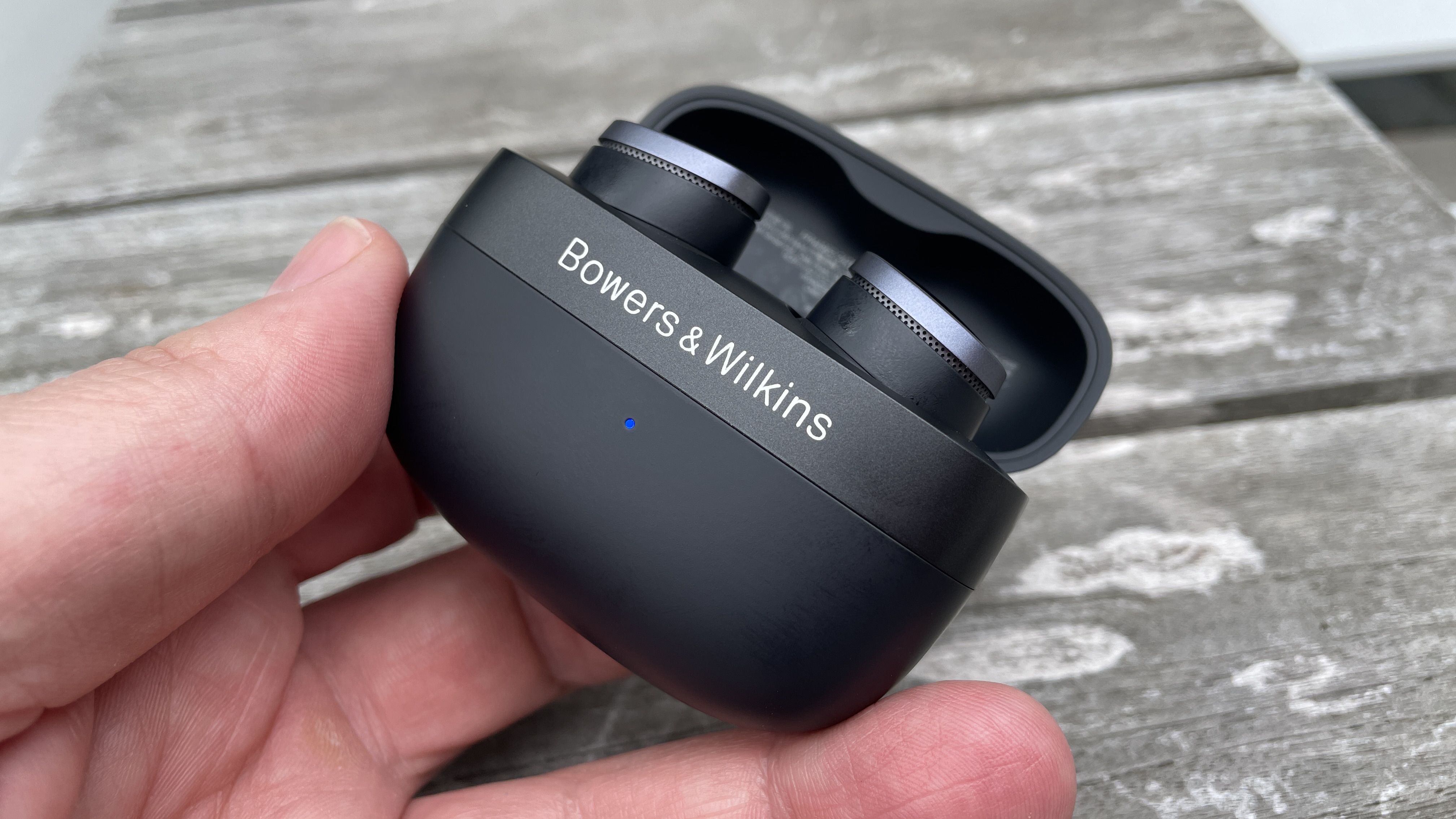

8. Bowers & Wilkins Pi8
Our expert review:
Specifications
Reasons to buy
Reasons to avoid
We weren't that convinced by the Bowers & Wilkins Pi7 S2 wireless earbuds. For such a high price, we just didn't feel that their performance could justify their considerable outlay. At £349 / $399 / AU$599, the Bowers & Wilkins Pi8 share their forebears' high-end asking price, making them some of the most expensive wireless earbuds we’ve tested. Here's the difference: the B&W Pi8 can justify those figures – they are absolutely outstanding.
From the very first notes of our listening time, we knew that these were no ordinary buds. As we stated in our Award-winning review: "There’s a maturity and refinement to the sound which you just don’t get from entry-level and mid-price wireless earbuds. They shine a light on any music streamed their way with a beautifully balanced approach – you can savour every frequency from the lowest of lows to the highest highs." Sumptuous detail and insight are married to virtuoso levels of precision and intent, leading to a performance that blends analysis with excitement in a way that's never less than thrilling.
They're good elsewhere, too. Perhaps the call quality could be a little better, but we find that the Pi8's noise cancelling is up to snuff, blotting out low-frequency rumbles and large swathes of background noise competently, even if they slightly lag behind the class-leading Bose QuietComfort Ultra Earbuds. Battery life clocks in at a solid 20 hours with the case, while the buds' codec support is impressive; alongside AAB and SBC, you're treated to aptX, aptX Adaptive and aptX Lossless for wireless playback in CD quality (16-bit/44.1kHz) with no lossy compression if you also have a source device that can handle it.
The charging case has a nifty party trick as a wireless re-transmitter, meaning you can physically connect the case to a non-Bluetooth source, such as an in-flight entertainment system, and it will stream the audio wirelessly to the earbuds. If you're on long-haul flights, it could be an unexpected saviour.
We find it hard to fault the buds' design, either. Like their gorgeous Bowers & Wilkins Px7 S2e and Px8 over-ear cousins, there's a tangible sense of class with the Pi8. We were pleased to see Bowers deviating from the brand's outgoing Pi7, not because we didn't like that design but because it indicated that the company was aiming to progress forward rather than rehash an old product. Almost everything about the Pi8 is new, from the shape of the buds to the internal tech and the drivers themselves.
The results have been outstanding. If you have the money and want the best wireless earbuds performance on the market today, we simply can't see past the B&W Pi8. Even at full price, we'd recommend them every day of the week.
Read our full Bowers & Wilkins Pi8 review
Best high-end wired in-ear headphones


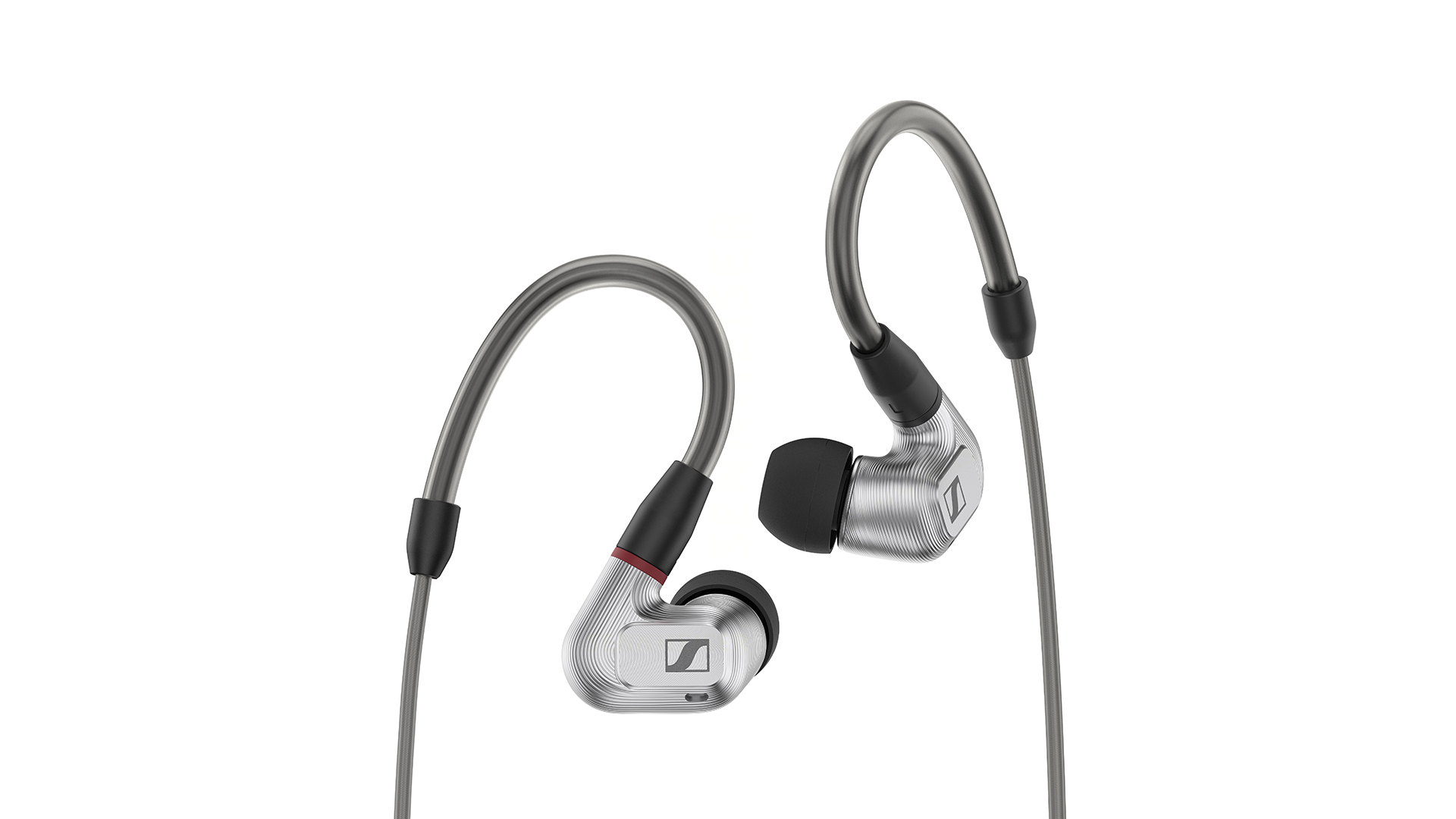

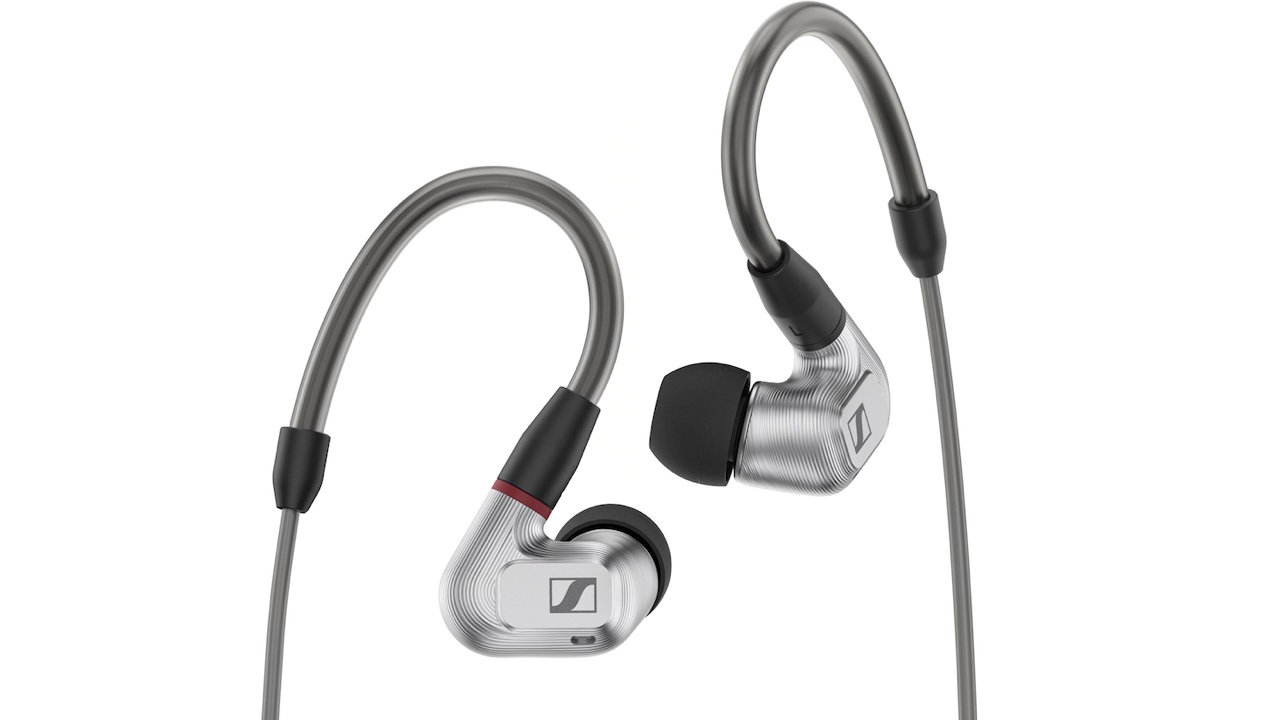
9. Sennheiser IE 900
Our expert review:
Specifications
Reasons to buy
Reasons to avoid
Rest assured, Shure aren't the only ones who can pull out a pair of great wired in-ear headphones. Sennheiser’s excellent IE 900 earbuds will appeal to purists who want to get the best audio possible from a high-quality source, and they certainly come packaged like premium in-ear headphones thanks to six ear tip options and three cables with a choice of normal 3.5mm and balanced 2.5mm / 4.4mm connectors. The only thing they don't have is an in-line remote, but that's just about forgivable given how these bad boys sound. They're not at all cheap (retailing currently at around £1,000), which makes them a step up even on the remarkable Shure Aonic 5 above.
So what are you paying for? Well, with rigidity and minimal vibrations in mind, Sennheiser's engineers have chosen to go with a single driver rather than the more fashionable multiple-unit approach that many rivals take, and the results are exceptional. The IE 900 are impressively clear and open-sounding, able to dig deep into the production of a recording with skill and enthusiasm. They also come over as confident and insightful, uncovering layers of low-level information and organising every track they are faced with into a structured and cohesive whole.
Partner these in-ear headphones with good-quality files and a high-quality outboard DAC (see the Chord Mojo 2) and you'll hear just why the IE 900 justify their hefty price tag. A sensational pair for serious audiophiles.
Read our full Sennheiser IE 900 review
Also consider
- Apple AirPods Pro 2: The AirPods Pro 2 felt like the moment when Apple finally delivered the sonic goods from a pair of its wireless earbuds. As one of the first pairs to earn our full five-star plaudits, the Pro 2 seriously closed the gap on the class leaders with a sound that blended detail and precision with power and excitement. Add to that a great feature set and lovely build and, for iOS users at least, they make a huge amount of sense.
- Sony WF-1000XM5: As one of the best pairs of wireless earbuds we've heard in the last few years, it took something truly special – the Technics EAH-AZ100 to be precise – to knock the XM5 from the above list. The WF-1000XM6 will likely arrive this year to fight back against Technics, so you can either hold out for them or grab the older pair at a knocked-down price.
- Sony WF-C500: They're still around and still superb. As you'll have seen from our above entry for the C510, we're keen on the robust, entertaining sound and expanded feature set of the newer buds, but the C500, especially at their reduced price, are are former What Hi-Fi? Award winners with plenty going for them.
- SoundMagic E80D: The E80D are another excellent pair of in-ear headphones from SoundMagic, with a clear, clean sound that digs out plenty of detail. That direct USB-C connection is a great bonus, too, especially as most modern devices, including smartphones, laptops and tablets, use USB-C.
- Sennheiser Momentum True Wireless 4: The Momentum TW4 are the real deal, wowing us with a refined, detailed sound presentation that feels rewarding and effortlessly musical. They're also comfortable, responsive and laden with useful features and fully earned five stars across the board.
- Shure KSE1200: Got a wad of dosh burning a hole in your wallet? Shure's KSE1200 may be costly (really, really costly to some onlookers), but boy are they an outstanding pair of wired in-ear headphones. Blending astonishing detail and agility with some of the most striking clarity and insight we've heard for a long time, these are an audiophile's dream pair of in-ears.
How to choose the best in-ear headphones for you
First of all, you need to decide how much you are willing to spend. That will be somewhat determined by how you are going to use your new in-ear headphones – there's no point forking out hundreds of pounds or dollars for something that will sit in a drawer for most of the year.
Are you going to plug them into a smartphone or will they be used with a premium portable music player packed with hi-res music? You can go the wired route for the ultimate performance-per-pound value, but there's always the wireless option should you want a bit more convenience from your earbuds.
Compared with the best over-ear headphones, which can look and feel big and bulky, the best in-ear headphones offer a more discreet listening experience, while the use of eartips tends to deliver decent levels of isolation from the outside world. So, you will also want to ensure the in-ear headphones you go for (and the tips you get with them) are comfortable. And, if you want to block out more of the outside world, you might want to consider active noise-cancelling, which is an increasing feature on all but the very budget true wireless earbuds these days.
There's a pair of earbuds for everyone on this list, including budget wired headphones and premium models, plus noise-cancelling headphones and Bluetooth headphones, too. Rest assured, we have tested all the in-ear headphones mentioned above, which is why you can be confident they are all up to the job. Check the most recent pricing to bag a possible discount and also don't forget our page dedicated to the best headphone deals.
How we test in-ear headphones
Facilities and methodology
We have state-of-the-art testing facilities in London and Reading where our team of experienced, in-house reviewers assess the majority of hi-fi and AV kit that passes through our door, including testing all types of headphones.
Testing in-ear headphones, whether it is the wired or wireless variety, naturally doesn't require us to be in a test room all the time, although when we want peace and quiet and to compare pairs with their closest rivals, then a dedicated room does come in handy. For the most part, we test in-ear headphones in our daily life and in the outside world: on a train during our commute, when walking around town, around the house and even when on a run or workout session.
Running in
We treat in-ear headphones as though they are speakers, so we give them plenty of time to run in, and then we use them with the equipment they are most likely to be partnered with, be it a smartphone, headphone amp and DAC, or portable music player.
Music selection
We also try a wide range of music and music file types, and if the earbuds offer extra features such as noise-cancelling, we also test this and use them in different environments to make sure it's up to scratch.
Collaborative effort
All review verdicts are agreed upon by the team rather than an individual reviewer to eliminate any personal preference and to make sure we are being as consistent and thorough as possible with our reviews. There is never any input from PR companies or our sales team when it comes to the overall verdict, with What Hi-Fi? proud of having delivered honest, unbiased reviews for nearly five decades.
FAQ

Which is better: wireless or wired?
If you are looking to get the absolute best sound quality you can for your budget, wired headphones still have an advantage over their wireless alternatives. Wired headphones, be they in-ear or over-ear, are generally more sustainable, too, as they don't require batteries or frequent charging to run. You can see a selection of great options in this category in our best wired headphones guide.
That said, wireless performance is improving all the time, while certain features such as ANC, spatial audio and transparency modes, are increasingly only found in Bluetooth models. Best of all, the massive convenience brought about by not having a trailing cable is a huge benefit, especially when wearing headphones outdoors. Wired headphones are practically obsolete when it comes to running and workout models.
This one all depends on priorities. If it's sound and nothing else, go wired. If it's convenience or next-gen features you can't live without, go wireless.
Are premium wireless earbuds worth it?
Higher price doesn't necessarily mean the earbuds sound better, but they do tend to come with a full set of features that more affordable models don't. Premium earbuds do come with the expectation that they should sound the best, too. In our opinion, the best pairs are most definitely worth it, provided they meet your given use case.
The best premium wireless buds, such as the Bose QC Ultra Earbuds and the Sony WF-1000XM5, offer a clear step up as far as sound quality goes, granting more detail, greater dynamics and a more overall polished performance. Many budget models don't have the same spread of features as more expensive designs, and might be missing key things like active noise-cancelling, spatial audio and niche benefits such as Bluetooth Multipoint, in-app ear fit test, customised sound profiles, personalised hearing tests and more.
To state the obvious, premium buds aren't worth it if you're not that interested in improved sound and extensive features. Many decent, mid-range buds such as the Sony WF-C700N offer a decent raft of benefits, including ANC and Bluetooth Multipoint, alongside eminently pleasing sound for an affordable price. If you just want a pair of headphones that you can live with, it's worth doing your homework to decide where you draw the line.
In-ear headphones vs in-ear monitors: what's the difference?
As we've stated in our full-length IEM explainer, there is none! Well, there's certainly no definitive categorisation that distinguishes some in-ear monitors (IEMs) from a pair of wired in-ear headphones.
For us, IEMs are pretty much a pair of in-ear headphones with pro-market connotations, in that they're usually built for the professional market for musicians and to use in studios, offer a robust, hardy finish and fit deeper inside your ear canal. These are all general terms, though, and you'll notice that these could all be aspects of what many people would simply term "in-ear headphones".
It's the same with design, in that there are no set rules as to what a pair of IEMs should be. Generally, most IEMs use memory foam eartips which are placed around or upon a small nozzle, with higher-end monitors opting for balance armature drivers over the dynamic drivers that most mainstream earbuds use. That isn't always true, as products calling themselves IEMs may use dynamic drivers, planar magnets or even electrostatic drivers.
In short, though, there's no true distinction between a pair of wired in-ear headphones and a set of IEMs, so you don't have to worry about it too much. Focus on the form, features and sound you want from your wired in-ear headphones and the rest will fall into place.

How do I make sure my in-ear headphones fit properly?
This is such a basic aspect of earbud / in-ear headphone ownership, and yet it's something we see even seasoned professionals sometimes fail to check properly. How your tips fit inside your ears makes a dramatic difference to the sound and comfort you'll experience, so much so that you could be fooled into thinking you've bought a pair of duds if the tips aren't as nestled and secure as they should be.
Most in-ears should provide a choice of tip sizes (often small, medium and large), with many also offering those same size options but with a material of a different consistency (one set of foam and one set of silicone, say). Make sure you try every iteration before settling on one pair, all while actively listening out for how the tips are affecting the sound. Headphones will sound thin and lacking bass weight if they're too loose, or else thick and muffled if they're too big. They'll also be uncomfortable and/or prone to falling out if you've selected the wrong size, naturally.
To get a decent fit, we recommend trying each size out by gently furrowing the tips into the ear canal and then twisting them 45 degrees to lock them in place. The best fit will give you a solid seal with the walls of your ear canal and also block a degree of external noise without making your ears feel congested. If you have modern, often pricier pairs of wireless earbuds, your companion app may offer an earbud fit test that runs a few tests while you’re wearing them to provide feedback on your fit.
Recent updates
- March 2025: We've added the SoundMagic E80D to our also consider section following a five-star review.
- February 2025: No new entries, but we've kept our copy up to date in line with the most recent changes to the market.
- January 2025: Replaced the Sony WF-1000XM5 with the newer Technics EAH-AZ100 and put the Sony in the also consider section.
- December 2024: Refreshed our copy to look ahead to prospective new pairs of in-ear headphones coming in 2025.
- November 2024: Added pictures to our FAQ section and refreshed copy in line with Awards and recent reviews.
- October 2024: Added the Sony WF-C510 as our best cheap wireless earbuds, put the C500 into our also consider section and labelled our Awards winners.
- September 2024: Following a rave five-star review, we've added the Bowers & Wilkins Pi8 wireless earbuds to the list as our 'best high-end wireless' entry.
- August 2024: Added references to new or upcoming in-ear models.
- July 2024: Added new question regarding ear tips to FAQ section.
- March 2024: Added also consider section to offer more alternatives for buyers
- February 2024: Added FAQ section to help with buying decisions and commonly asked questions.
- January 2024: Replaced the Bose QuietComfort Earbuds II with the new Bose QuietComfort Ultra Earbuds following a five-star review for the latter.
Get the What Hi-Fi? Newsletter
The latest hi-fi, home cinema and tech news, reviews, buying advice and deals, direct to your inbox.
Andy is Deputy Editor of What Hi-Fi? and a consumer electronics journalist with nearly 20 years of experience writing news, reviews and features. Over the years he's also contributed to a number of other outlets, including The Sunday Times, the BBC, Stuff, and BA High Life Magazine. Premium wireless earbuds are his passion but he's also keen on car tech and in-car audio systems and can often be found cruising the countryside testing the latest set-ups. In his spare time Andy is a keen golfer and gamer.
